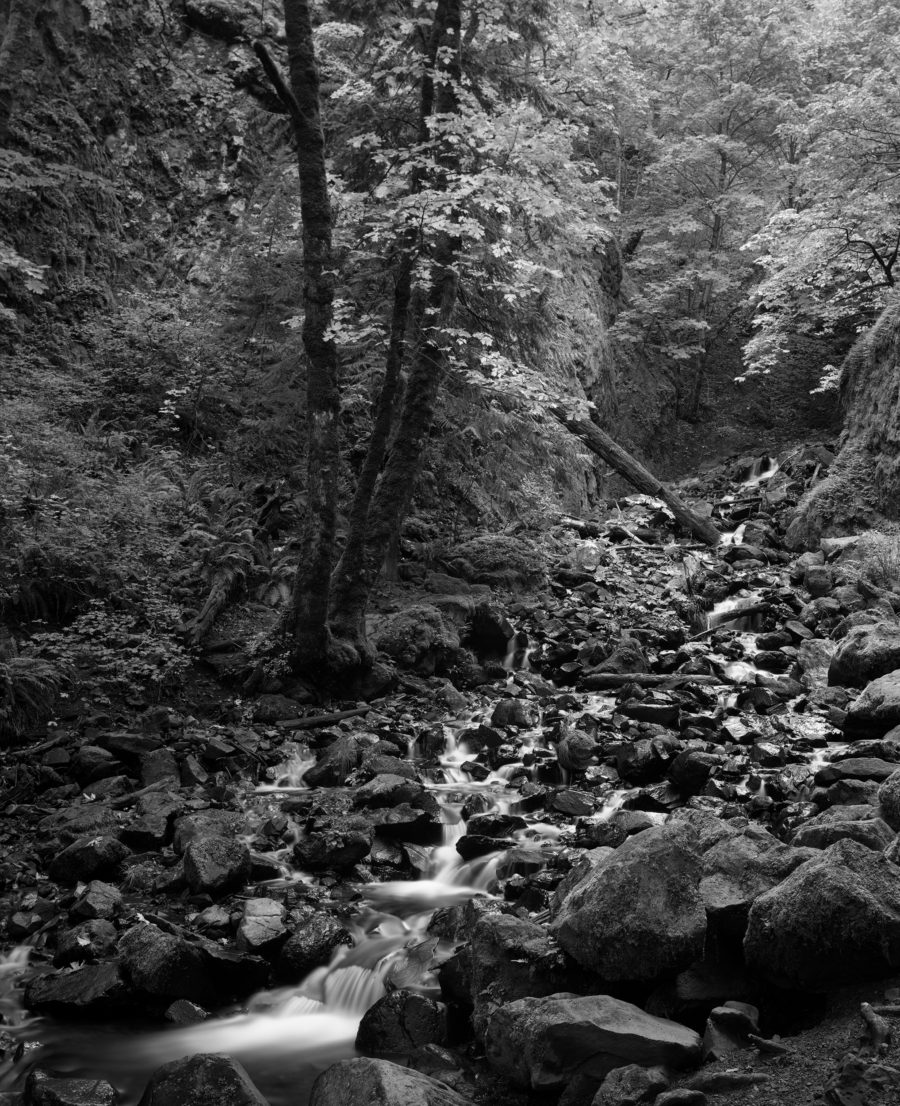There are names, and then there are NAMES. In the Pacific Northwest, places like Portland, Eugene, or Klamath Falls have normal, family-oriented names, while Deadman Pass, Cape Disappointment, and Starvation Creek are another matter entirely. How did they get these NAMES? And, more importantly, can someone take good pictures there? Let’s find out.
Here are some of the names I am referring to:
Termination Point
Useless Bay
Point No Point
Depression Lake
Damnation Peak
Idiot Creek
Idiotville
Dismal Nitch
Dead Man Cove
Deadman Pass
Poverty Flats Road
Starvation Creek
Murder Creek
Desolation Creek
Dead Ox Creek
Rampage Creek
Desperation Reservoir
Cape Foulweather
Destruction Island
Danger Bay
Suicide Creek
Dead River
Desolation Canyon
Thirsty Creek
Deception Pass
Point Distress
Coffin Butte
Dead Point Creek
Devil’s Punchbowl
Honorable Mention:
Dope Creek
Boiler Bay
Mount Defiance
Some of these places are hard to reach. Others are easy, such as Starvation Creek, and Cape Foulweather.
Starvation Creek Falls.

Starvation Creek gets its name from a winter train trip in the early 1900’s that got stuck in a snow bank. Things were looking bleak while the crew and passengers waited for rescue from Portland. Rest assured that nobody ate anyone this time. The rescue was successful after a week, and the hungry passengers were saved.

2021 Gary L. Quay
This is one of my favorite waterfalls in the Columbia Gorge. I like the way it cascades down from behind that rock on the right. Up and to the left is a large plunge, but it’s hard to get that in a pictire with the lower falls, and not have it be too busy.
Deardorff V8
Lens: 240mm Nikkor
Film: Ilford FP4+ developed by Blue Moon Camera

©2013 Gary L. Quay
The leaves were barely turning golden, and the contrast was very low. It was clearly a job for Ilford Ortho Plus. Ortho film is a high contrast, which I tame somewhat with PMK Pyro. Even with all the uncertainties that arise with pyro developers, there are times when all of the hair pulling is worth it.
Camera: Sinar Alpina 4×5.
Lens: 90mm Nikkor
Film: Ilford Ortho Plus developed in PMK Pryo.

©2007 Gary L. Quay
A pair of angels alit upon a stone wall, soon followed by their dog, and were bathed in the newborn spring sunlight.
It’s hard to fathom, but they are probably in college by now.
Camera: Hasselblad 500 CM
Lens: 55mm Carl Zeiss
Film: Kodak 100UC
Next, we head to the Washington Coast.
Cape Disappointment.

Cape Disappointment gets its name from a British trader named John Meares (for whom Cape Meares is named) who attempted to sail into the Mighty Columbia, but never made it past the Columbia Bar. Another captain beat him through it a few years later.
The Columbia Bar is where fresh water and salt water meet, and they’re not too happy about it even in fair weather. The big container ships sometimes struggle to cross it in foul weather.

©2021 Gary L. Quay
Cape Disappointment has one of those great place names that express some of the hardships and horrors that abounded during the settling of the West. This one happens to come with a lighthouse.
Camera: Hasselblad 500CM
Lens: 250 Zeiss Sonnar
Film: Fuji Acros II developed in FA-1027
Between the lighthouse and the nearby cliff is a place called Dead Mans Cove. I looked for a way to take a picture of it, but no such luck.
While Dead Mans Cove may prove hard to get a picture of, Deadman Pass is hard to miss.
Deadman Pass

Deadman Pass is a stretch of I-84 near Pendleton, Oregon. It is at the top of the Blue Mountains, and commands some astounding views with precious few places to pull over for a picture. Deadman Pass has a 6% grade at places, making it resemble a ski slope in the winter.
Deadman Pass got its name in an event known as the Bannock Indian Uprising or the Bannock War in Wyoming in 1876. The “Uprising” was mostly a figment of white settlers’ nervous trigger fingers, along with Eastern newspapers’ propensity to embellish anything with blood in it. It ended with a whimper when a group of Buffalo Soldiers, sent to confront the Bannock’s at their reported encampment, found nobody there. They were, in reality, on their reservation getting ready for harvest.
News of the Uprising made its way to Oregon where settlers also got itchy nervous fingers, and some tension with the native population ensued, and a wagon driver was killed on the road, and the name stemmed from that.
Isn’t history fun?

©2018 Gary L. Quay
This is the view from Deadman Pass Road near Pendleton, Oregon. A little of the road is in the picture as well.
Camera: Nikon D810
Lens: 24-120mm Nikon VR

©2018 Gary L. Quay
This is the view from “Cabbage Hill” near Pendleton, Oregon. It’s quite the view, and is more than a single photo can capture. My hope is to do it justice.
I took it along the Deadman Pass. It’s a fine, Western Place of Doom.
Camera: Nikon D810
Lens: 24-120mm Nikon VR
Jumping to the Oregon Coast, we visit Cape Foulweather.
Cape Foulweather

The Oregon Coast is normally a study in clouds, wind, slugs and mushrooms, but on certain days, the sun comes out and temporarily makes Cape Foulweather seem ironically named.

©2022 Gary L. Quay
Cape Foulweather in fair weather.
Camera: Nikon D810
Lens: 24-85mm NIkon
Cape Foulweather got its name from Captain James Cook, who sailed past during its namesake weather. There isn’t much more to say about it other than to bring a sturdy umbrella.

©2022 Gary L. Quay
Cape Foulweather again in fair weather.
Camera: Nikon D810
Lens: 24-85mm NIkon
From the Oregon Coast, we head slightly east.
Idiot Creek

From Roadtrippers.com, “Located just 50 miles from Portland in the Tillamook State Forest just off of Oregon Route 6, sits the ghost town of Idiotville. While the town is now just an eerie patch of land in the middle of the forest, it was once a less-than-thriving mining community that earned its name. Long ago, Idiotville was a logging camp tasked with salvage operations after two straight decades of forest fires that ravaged the Oregon wilderness from 1933 to 1951. Started by sparking steel cables, a discarded cigarette, and possibly even a Japanese weapon, the four massive fires became known as the Tillamook Burn, and were responsible for destroying nearly half a billion dollars worth of lumber. Idiotville, and the nearby Ryan’s Camp, were set up in an attempt to save whatever wood could be salvaged after the blazes. The salvage camp was located far from civilization, taking several days worth of travel just to reach. The operations were hard, sending the lumber workers through burnt, barren fields where the chances of salvage were slim. After a hard day of work, the men would return to their camp covered in soot, their lungs full of ash. Soon, the camp began to be known as Idiotville, because only an idiot would travel so far for such fruitless work, leaving him stranded in the middle of a forest fire’s aftermath. It wasn’t long before the name stuck, appearing on maps even after the town’s work dried up and the buildings disappeared. A nearby stream was even named after the town, and in 1977, Idiot Creek was added to the official United States Board on Geographic Names. Today, Idiotville isn’t much more than a name. No structures remain in the old lumber camp, but it remains a popular destination for hikers who often trek out to the location.”
Another interesting place name from Oregon: Idiot Creek, which is right next to Idiotville.

©2022 Gary L. Quay
It is the association with the Tillamook Burn that earns this creek a place among the Pacific Northwest’s Places of Doom.
Camera: NIkon D810
Lens: 28mm Zeiss Distagon ZF2

©2022 Gary L. Quay
Idiot Creek, a name that will live in… well… obscurity.
Camera: Nikon D810
Lens: 28mm Zeiss Distagon ZF2
The next stop on the Places of Doom tour is the Willamette Valley, and a very small body of water that once held a body.
Murder Creek

The Willamette Valley is known for its wines and rich, sometimes volcanic, soil. The climate is almost Medeteranian with wet springs and dry summers. Much of the afore-mentioned soil came there via the Missoula Floods, which, at about 600 feet deep, rampaged down the Columbia River at the ends of successive ice ages. You can see other signs of the floods in the large, bus-sized rocks, called “erratics” laying far from where ice and water chiseled them from the bosom of their respective lava flows, and carried them hundreds of miles west. The power of water in vast quantities should never be underestimated.

©2022 Gary L. Quay
Murder Creek meanders along wooded banks and farm fields in the Willamette Valley near the town of Albany, Oregon. It got its name from, you guessed it, a murder that happened along it in the mid 1800’s. A man was murdered for having $100.00 on his person while in town, and the murderer was hanged in front of a crowd of 3,000 who came to watch because television had not yet been invented.
I chose the subtitle “Banality of Evil” from the book “In Cold Blood” by Truman Capote because we keep going to tranquil and beautiful places with horrible names and histories.
Camera: Nikon D810
Lens: 28mm Zeiss Distagon ZF2.

©2022 Gary L. Quay
Second verse, same as the first.
More of the tranquil Murder Creek.
Camera: Nikon D810
Lens: 28mm Zeiss Distagon ZF2
Murder Creek is hard to find. You really have to want to do it. It’s mostly hidden by trees or grasses because it is so small. There is a road called Murder Creek Road, but, you guessed it, it does not intersect with the creek.
That’s it for this time. I will be back with more Places of Doom sometime soon.
Thanks for looking
–Gary L. Quay

